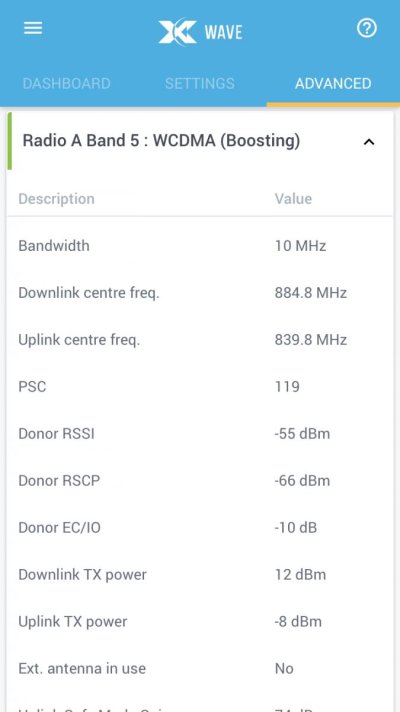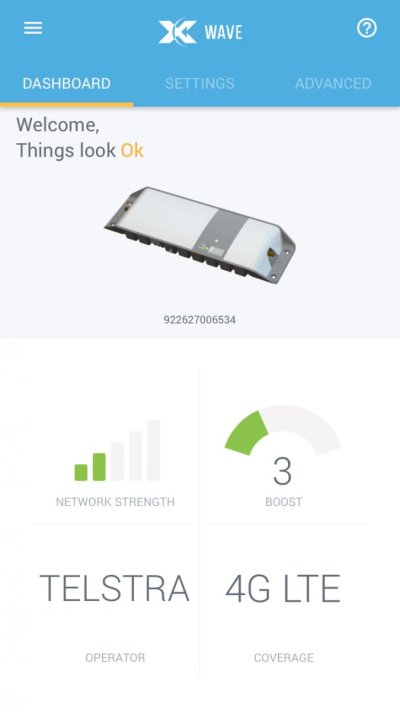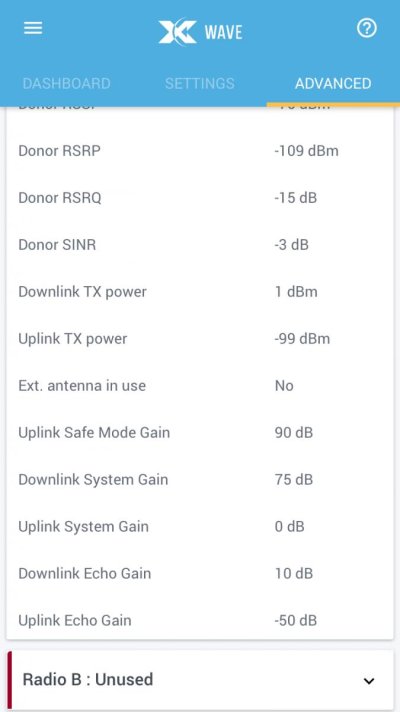I have no links to anyone in the industry, just a product user and sharing my experiences.
The 100db claims are on the company's website (link in post #39) , I'm just quoting them, not claiming that I have tested or measured it. I imagine the USA has some consumer protection against misleading and deceptive advertising, so I doubt they make the claims lightly. But I have not attempted to dig further into what it is they claim. There are large fines here for false claims.
For BigSalmonFish and Crusty Chief, go with the wired/cradle units if you can. Those devices, Wilson, WeBoost etc, are termed Mobile Phone Boosters and are banned for use in Australia. $0.25m fine possible. When people use cradles here they are just connecting their phone to an antenna (no amp) which can help in a car, where you can't get out and stand on the roof, but they are of no use in a boat.
So hence my persistence with the wireless type, termed Mobile Phone Repeaters here. You have to apply to your network service provider to use one, but the Cel-Fi distributor has streamlined that process now they have the unit licenced for use.
As far as directional antenna's are concerned, some of the Cel-Fi products use a directional internal antenna. This is likely why the phone app has a test function. You simply experiment with different locations to measure performance. A directional internal antenna, possibly aided by shielding from my solar panels, could overcome the feedback loop you describe. I have my internal antenna about 4" below a solar panel. The solar panel is on top of the pilothouse roof and the Cel Fi antenna is tucked behind an overhead panel near the helm. With the front of the overhead panel removed the test gave 130.461 UMTS. I put the 1/2" ply cover back in place and the test gave 129.224 UMTS, so I figured the location is fine, and I prefer to hide the cable and antenna.
I do see 4 or 5 bars of 3G, and at best 1 bar of 4G. Just saying what I see!
But some clarification for you. In Australia Telstra have the widest network coverage, and their 3G coverage is pretty good. A small town nearby usually gets you some signal. But the 4G network rollout is still a work in progress. They have coverage maps on their website, but it really doesn't matter - what I see is what I get! Where I am anchored at present is the west side of Moreton Island. There is a resort about 7 miles to the north and a small settlement (Kooringal) at the south end of the Island, probably about 3-4 miles away. One or both will have 3G towers. Brisbane city is about 20 miles to the west and will have the nearest 4G tower. This morning on 4G I could get 1 bar, now I can't get any. But I'll persist, as I'd like to post the screen shot data when boosting the 4G signal.
Below are the screen shots for the 3G connection. Not sure whether they clarify anything given that the un-boosted signal is quite strong anyway, but it will be interesting to compare the numbers once I can get the 4G ones.
What is puzzling to me on the screenshot is the line 'Ext antenna in use' with 'no'. I disconnected the cable to the ext antenna and, not surprisingly, the unit stopped working. Re-connected, rebooted and its working again. Hope to post 4G screen shots for comparison before too long!
Edit: Curious, I checked the network coverage map. The resort to the north has 4G but Kooringal does not. In places the 4G reaches out from the mainland 20 miles away, but I am anchored in a locations that is hole in the coverage. I see what you mean about the strength of 4G though. Still, where I am will be a good test of the boost, once I manage to get 1 bar again.






